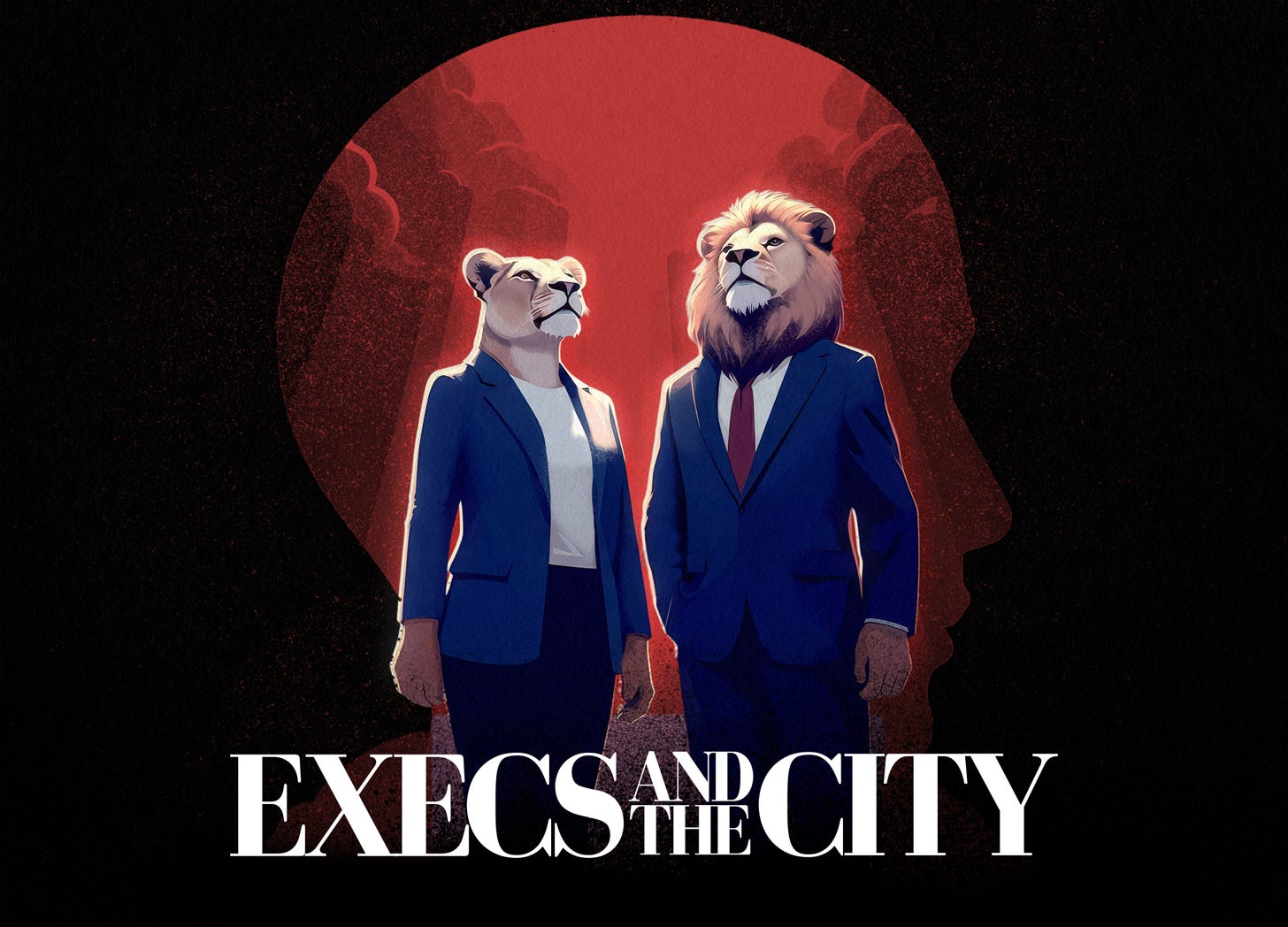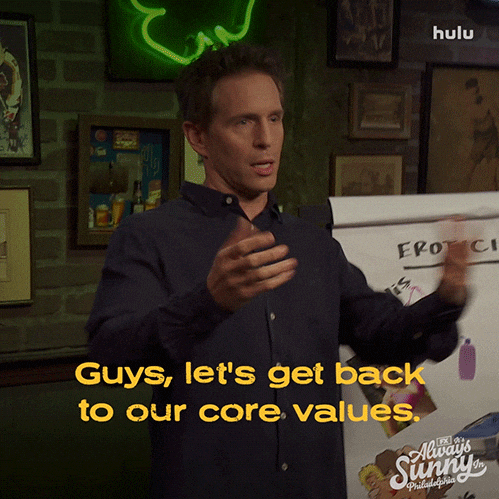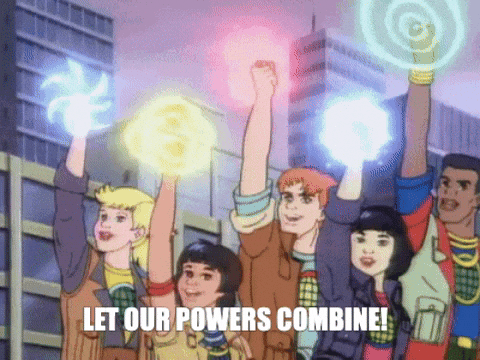The 1 Mind Trick That Lands Bigger Deals
The mental shift from proving your worth to demonstrating your value
Welcome to Execs and the City, where we reveal how elite leaders create an unfair advantage in their careers. Paid subscribers get exclusive perks like our complete toolkit, including full access to our guides and powerful career tools.
I've watched thousands of talented leaders cap their potential before conversations even begin.
The culprit? Their mindset.
They walk into boardrooms armed with credentials, market research, and carefully rehearsed talking points. They're prepared to prove their worth, justify their value, and win through superior argumentation.
But too often, they over index on selling the flight specs when they should be selling the vacation.
They work harder to convince than to connect.
Think about it.
When you book a vacation, do you get excited about the aircraft engine specifications or the pristine beaches you'll walk on? Do you obsess over the thread count of hotel sheets or the sunset you'll watch from your balcony?
Yet most senior leaders do exactly this in high-stakes conversations.
They list achievements, quantify results, and showcase credentials—which is like describing the camera specs when someone just wants to see the photos.
Meanwhile, the people across the table aren't thinking about your resume.
They're thinking about their problems, their pressures, and their vision of a better future.
This is where one simple mind trick changes everything.
Instead of selling what you've done, you sell what their world looks like after you've solved their biggest challenges.
No shortcuts here—you have to actually understand their problems first. This requires genuine curiosity about their world, not just aligning your credentials.
You don't negotiate for a deal you hope comes your way—you act like day one already started and give them a real glimpse of what working with you feels like.
The psychological shift is subtle but profound.
While others waste time to prove their worth, you paint the picture of their success with you.
While your competitors hope their message landed, you're already working on solving real problems with the team.
This isn't about arrogance or manipulation. It's about understanding that perception shapes reality in high-stakes conversations.
When you project the quiet confidence of someone who's already solving their problems, something powerful happens: they start believing it too.
From Career Positioning to Deal Psychology
I didn't always understand this.
Much earlier in my career, when my focus was primarily on career positioning and personal branding rather than interview and negotiation coaching, I thought the executives who commanded the biggest packages were simply the best at traditional negotiation tactics.
I'd work with senior leaders who could anchor high, handle objections skillfully, and walk away confidently when necessary.
To be honest, their confidence was intimidating at first.
These were leaders with stellar track records and proven results—people who had every right to command premium packages. They knew all the tactics from all the books and could build the most objective, data-driven cases for their worth.
But I kept witnessing the same pattern.
When these talented leaders approached conversations like chess matches—countering aggressively, justifying every dollar, positioning negotiations as win-lose scenarios—something predictable happened.
Hiring managers shut down.
Enthusiasm soured into defensiveness.
What started as strong interest turned into budget battles. Even when my clients got their numbers, they often damaged relationships before they even began.
I watched this dynamic repeat dozens of times across hundreds of conversations.
Brilliant executives with outstanding credentials creating unnecessary friction in what should have been collaborative planning sessions.
Then I started working with a different type of leader—those who approached these same conversations with a completely different mindset.
Take Sheryl, a client who was negotiating a CEO role at a struggling company.
The board was desperate for the right leader, but nervous about the investment. Instead of the traditional approach, Sheryl did something that completely shifted the dynamic.
During what everyone assumed would be the "money call," Sheryl opened with this:
"I've been thinking about our conversations, and I'll review the offer details this week. But I'm more focused on the transition plan right now. How do we minimize the impact on the current team while salvaging the enterprise value through this leadership swap?"
The investor went quiet for a moment. Then something fascinating happened.
Instead of negotiating, they started collaborating. They began sharing internal challenges Sheryl hadn't heard before. The conversation shifted from "Will Sheryl accept our offer?" to "How do we make Sheryl’s transition successful?"
The close was assumed.
Two weeks later, we secured a 40% base salary increase plus enhanced bonuses, additional equity, sign-on payments, and milestone structures—all without a single confrontational moment.
But Sheryl isn't unique—at least in this case.
I've seen this pattern repeatedly across hundreds of conversations.
The senior leaders who focus on solving problems instead of proving worth consistently land bigger packages with less friction. They transform combative negotiations into collaborative planning sessions.
They build momentum instead of resistance.
I've found this approach particularly powerful for women executives, who can quickly close gender pay gaps and even break through benchmarks without triggering concerns about being too assertive or aggressive or bitchy—as the labeled perception they must often juggle.
The collaborative nature feels more natural and less intimidating to decision-makers, while still commanding premium outcomes.
The difference is in understanding that elite executives seize control of positioning—not by oversharing their past accomplishments, but by taking conversational ownership of the future outcome.
While one group fights for what they deserve, the other demonstrates what they deliver.
The Phantom Close
What Sheryl did has a name.
The Phantom Close.
It's the art of acting as if the deal is already finalized, triggering a psychological shift where the other party becomes motivated to secure the perceived "done deal" rather than evaluate alternatives.
But let me be clear about what this isn't.
This isn't manipulation. It's not fake confidence or arrogance disguised as strategy. You can't phantom close your way into a role you're not qualified for or a package you haven't earned.
Well, some can. Let's not be overly naive.
I just want better for you.
The Phantom Close works best when real fit exists.
When you have the skills they need, when you understand their challenges, and when you can actually deliver the outcomes you're implying.
Think of it as the psychological equivalent of "sell the vacation."
The Core Components
Assumptive Language You speak in terms of "when we" instead of "if you." Your language assumes partnership rather than evaluation. "When we start in January, should we prioritize the West Coast expansion or the team restructure first?"
Implementation Focus You discuss logistics, team integration, and strategic planning instead of why you deserve the role. "What's your biggest concern about the leadership transition, and how can we minimize disruption to the current team?"
Strategic Consultation You offer insights and ask questions that only someone "inside" would think to address. "Based on what you've shared about the Q4 challenges, have you considered the timing impact on the European rollout?"
Confident Certainty You project unwavering belief in the outcome without ever explicitly claiming the deal is done. "I'll need a few days to review the details and finalize everything on my end. I suspect we’ll be working together by the end of next week."
Future-State Visualization You help them imagine the positive outcome and your role in achieving it. "Six months from now, when we've stabilized the revenue stream, what does the next growth phase look like?"
Collaborative Problem-Solving You position yourself as a partner tackling shared challenges, not a candidate seeking approval. "This market timing creates an interesting opportunity. Should we accelerate the launch to capture the advantage?"
How It's Different From What Most People Think Negotiation Is
Most people think negotiation operates on a simple premise—prove your worth, state your terms, and hope they agree.
The Phantom Close flips this entirely.
Instead of asking "What can you offer me?" you ask "How do we make this transition seamless?"
Instead of proving worthiness through past achievements, you demonstrate value through future-focused strategic thinking.
Instead of negotiating from a position of need, you operate from a mindset of abundance.
The psychological shift is profound. You're not fighting to win a deal—you're collaborating to solve a problem that everyone agrees needs solving.
When to Use the Phantom Close
This approach works best when:
Mutual fit exists between you and the opportunity
You've already established credibility and rapport
You're dealing with sophisticated decision-makers who recognize quality
Traditional negotiation might damage the relationship or create unnecessary friction
When the conditions are right, the Phantom Close transforms what could be a combative negotiation into a collaborative planning session.
The other party stops asking "Should we hire this person?" and starts asking "How do we make this work?"
And that shift—from evaluation to collaboration—is where the real magic happens.
Why Your Brain Can't Resist the Phantom Close
To understand why the Phantom Close works so reliably, we need to examine the cognitive biases that drive human decision-making—particularly in environments where millions of dollars and careers are on the line.
Loss Aversion
The fear of losing what you never had.
The most powerful force behind the Phantom Close is loss aversion, discovered by psychologists Daniel Kahneman and Amos Tversky.
In short, people feel the pain of losing something twice as intensely as they feel the pleasure of gaining something equivalent.
How this plays out in executive conversations:
When you act like the deal is already done, the other party begins to mentally "own" the solution you represent. They start imagining their problems solved, their team strengthened, their goals achieved—all with you right there beside them.
Once they've psychologically possessed this future state, walking away feels like losing something they already have.
The conversation shifts from "What might we gain by hiring this person?" to "What will we lose if this doesn't work out?"
That shift taps into the emotional pain associated with losing and helps psychologically stack the deck in your favor.
The Endowment Effect
Why mental ownership matters.
Related to loss aversion is the endowment effect—the tendency for people to value things they own (or perceive they own) much higher than identical things they don't own.
When participants were given a coffee mug, they demanded nearly twice as much money to sell it as they would have been willing to pay to buy an identical mug.
The Phantom Close leverages this by accelerating psychological ownership.
When you use assumptive language like "our partnership" and "your new role," you're not just describing a potential future—you're helping them mentally possess it.
When you discuss implementation challenges and strategic planning, they start investing mental energy in making "their" solution work.
Each planning conversation increases their psychological commitment to the outcome. The more they invest in the phantom reality, the harder it becomes to walk away.
Sunk Cost Psychology
The trap of prior investment.
The sunk cost fallacy occurs when people continue an endeavor due to previously invested resources, even when it's no longer rational to do so.
Here's where the Phantom Close gets particularly powerful:
Once decision-makers start treating you like their incoming solution, they begin making "soft investments" in the relationship:
Internal discussions about your integration
Preliminary resource allocation planning
Team introductions and strategic briefings
Mental energy spent on post-hire scenarios
The more someone has "invested" in the phantom deal, the greater their psychological pressure to see it through. Walking away means abandoning all that prior effort and starting over.
This creates a self-reinforcing loop with loss aversion. They fear losing both the solution you represent AND the time and energy they've already committed.
Timing becomes your leverage.
You've heard me say that haste equals risk in negotiation—acting too quickly shreds your power. The inverse is also true. Allowing a negotiation to unfold naturally—or strategically slowing it down—amplifies the sunk cost effect.
As days pass, their alternatives start looking less attractive.
Other candidates move on. Internal pressure builds. The team becomes invested in making it work with you specifically.
Eventually, it becomes cheaper to meet your terms than to restart the entire process or explain to stakeholders why they couldn't close their preferred candidate.
Authority Bias
Why confidence creates credibility.
Authority bias is our tendency to attribute greater accuracy to the opinion of someone we perceive as an authority figure, regardless of the content's merit.
The Phantom Close requires you to project unwavering confidence in the outcome. This isn't arrogance—it's the quiet certainty of someone who already belongs in the role.
Research shows that confident language significantly enhances perceived competence and authority. When you speak definitively about future scenarios, others begin to see you as someone who "knows" something they don't.
This creates a powerful feedback loop.
Your projected confidence enhances their perception of your authority, making them more likely to accept your framing of the situation, which reinforces your confidence and their willingness to collaborate rather than evaluate.
The Consultant Effect
From candidate to advisor.
When you shift from proving your qualifications to solving their problems, something fascinating happens neurologically.
You bypass their "evaluation mode"—the mental state where they're comparing options and looking for reasons to say no—and activate their "problem-solving mode," where they're focused on making solutions work.
This is why the strategic consultation component is so crucial.
When you ask questions and offer insights that only an "insider" would think to address, you signal that you're already thinking like their solution, not their candidate.
Why Sophisticated Decision-Makers Are Most Susceptible
This is where things get interesting—at least for a nerd like me who gets hyper cerebral about these things.
The more intelligent and experienced the decision-maker, the more vulnerable they are to these effects.
Why?
Because they're used to making fast, high-stakes decisions based on incomplete information. They rely on psychological shortcuts and pattern recognition to navigate complexity.
When you present the pattern of confident competence—someone who clearly understands their challenges and is already thinking about solutions—their experience tells them this is what good hiring decisions feel like.
You gain much better control of the outcome.
The Neurological Reality
At the brain level, the Phantom Close works because it engages our more primitive decision-making systems—the ones designed for survival, not spreadsheet analysis.
These systems evolved to help us quickly identify opportunities and threats. They're faster than our analytical thinking, more emotional, and incredibly powerful in shaping our choices.
When someone's primitive brain starts categorizing you as "our solution" rather than "potential hire," the rational brain follows. They begin looking for evidence to support the decision rather than reasons to reject it.
The psychology is clear.
Perception doesn't just influence reality—in high-stakes conversations, perception becomes reality.
How to Execute the Phantom Close
Now that you understand the psychology, let's get tactical.
The Phantom Close isn't a single conversation move—it's a strategic approach that unfolds across multiple touchpoints. Here's how to implement it effectively without seeming presumptuous or damaging relationships.
The Three Pillars of the Phantom Close
Pillar 1: Assumptive Communication
Pillar 2: Strategic Consultation
Pillar 3: Collaborative Planning
Each pillar builds psychological momentum while maintaining professional credibility. Let's break down what to say, what to ask, and what to do for each.
Pillar 1: Assumptive Communication
This is about shifting your language from conditional to collaborative, from hopeful to inevitable.
What to Say
Replace "if" with "when" in all communications. Use collaborative pronouns that assume partnership.
Instead of: "If you decide to move forward with me..."
Say: "When we begin working together in January..."
Instead of: "I hope you'll consider my proposal..."
Say: "While you review the offer, I'll focus on the transition plan..."
Instead of: "I'd love the opportunity to..."
Say: "I'll need a few days to finalize everything on my end..."
What to Ask
Frame questions that assume forward momentum and partnership.
"What's your biggest concern about the leadership transition?"
"When we start, should we prioritize the West Coast expansion or team restructure first?"
"What would make this integration seamless for everyone involved?"
What to Do
Use future-tense language naturally in conversations
Reference "our work together" in follow-up communications
Send thank-you notes that include additional strategic insights
Pillar 2: Strategic Consultation
Transform from candidate to advisor by thinking and acting like you're already solving their problems.
What to Say
Offer insights and observations that only someone "inside" would think to address.
Example approach: "Based on our conversations, I see three immediate opportunities: [specific insights]. We should prioritize the revenue optimization and the team alignment challenge first."
This positions you as already thinking like their strategic partner, not their potential hire.
What to Ask
Ask questions that demonstrate insider-level thinking about their challenges.
"Given the Q4 revenue concerns, have you considered accelerating the product launch?"
"What obstacles do you anticipate in the first 90 days, and how should we address them?"
"How does the timing of this hire impact the European rollout strategy?"
What to Do
Research their industry challenges and come prepared with insights
Connect dots between different parts of their business
Share relevant articles or connections that help with their challenges
Think through implementation challenges before they raise them
Pillar 3: Collaborative Planning
Focus on execution and problem-solving rather than evaluation and qualification.
What to Say
Frame conversations around making their future better, not proving your past worth.
Framework: "Six months from now, when we've [specific achievement], what does [next challenge/opportunity] look like?"
Example: "Six months from now, when we've stabilized the revenue stream, what's our biggest growth opportunity?"
What to Ask
Questions that assume you're already part of their solution team.
"What could go wrong in this transition, and how do we prevent it?"
"How do you envision the first team meeting should go?"
"What's most critical for the team during the first 30 days?"
What to Do
Propose next steps that assume progression
Plan stakeholder meetings as collaborative sessions, not interviews
Think through potential challenges and come prepared with solutions
Follow up with concrete ideas for implementation
Red Flags to Avoid
Never Explicitly Claim the Deal is Done
Don't say "I assume we're moving forward" or "Since I'll be starting Monday..." The assumption should be subtle and earned.
Don't Ignore Their Process
Respect their timeline and decision-making structure. The Phantom Close works within their process, not around it. Your job is to help them make their decision making easier—not bogart the entire process.
Avoid Seeming Desperate or Pushy
If they push back on your assumptions, pivot gracefully: "I appreciate your thorough process. I'm just excited about the strategic challenges we discussed and wanted to be prepared to contribute immediately."
Don't Use This Without Genuine Fit
The Phantom Close only works when real mutual value exists. Don't try to phantom close your way into situations where you're not qualified or they're not really interested.
Measuring Effectiveness
You'll know the Phantom Close is working when:
They start using "when you join" language instead of "if we hire you"
Questions shift from evaluation ("Tell me about your experience") to logistics ("How would you handle the team transition?")
They begin sharing internal challenges and seeking your input
Timeline discussions become collaborative rather than one-sided
Other stakeholders are introduced as collaborators, not evaluators
The Phantom Close transforms negotiations from battles into collaborations. But the real power isn't just in landing bigger deals—it's in what happens next.
Your Move
The Phantom Close isn't magic. It's sophisticated psychology applied ethically.
It works because it aligns your projected confidence with their need for certainty. When you act like you already belong in the role, others start believing it too.
But here's what matters most.
This approach doesn't just land bigger deals. It builds stronger relationships from day one.
When you start a role with tremendous goodwill and momentum—because the hiring process felt collaborative rather than combative—you're set up for long-term success. The board isn't second-guessing their investment. The team isn't wondering if you're the right fit. Everyone's excited about the solution you represent.
The competitive advantage is clear.
While others negotiate defensively, you're already solving problems.
While they prove their worth through past achievements, you demonstrate value through future-focused thinking.
While they hope for the best, you create inevitability.
Here's your implementation strategy:
Master the language patterns in your current conversations
Practice the consultant mindset in low-stakes interactions
Build genuine expertise that backs up your confidence
Study decision-makers and their strategic challenges
The executives who command the biggest packages operate from a fundamentally different mindset.
Stop negotiating like you're lucky to be considered.
Start acting like you're the solution they've been seeking.
Your career isn't determined by what you've accomplished. It's shaped by how confidently you approach what's next.
Your move.
If this article helped you, consider upgrading to a paid subscription to unlock all of our content and subscriber perks. You'll get access to our toolkit, including deep interview prep, expert courses, and free resume and LinkedIn tools.
Stay fearless, friends.










